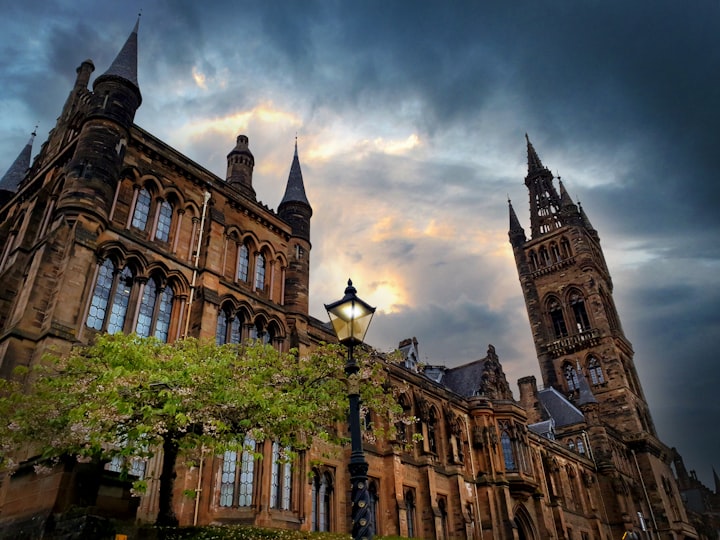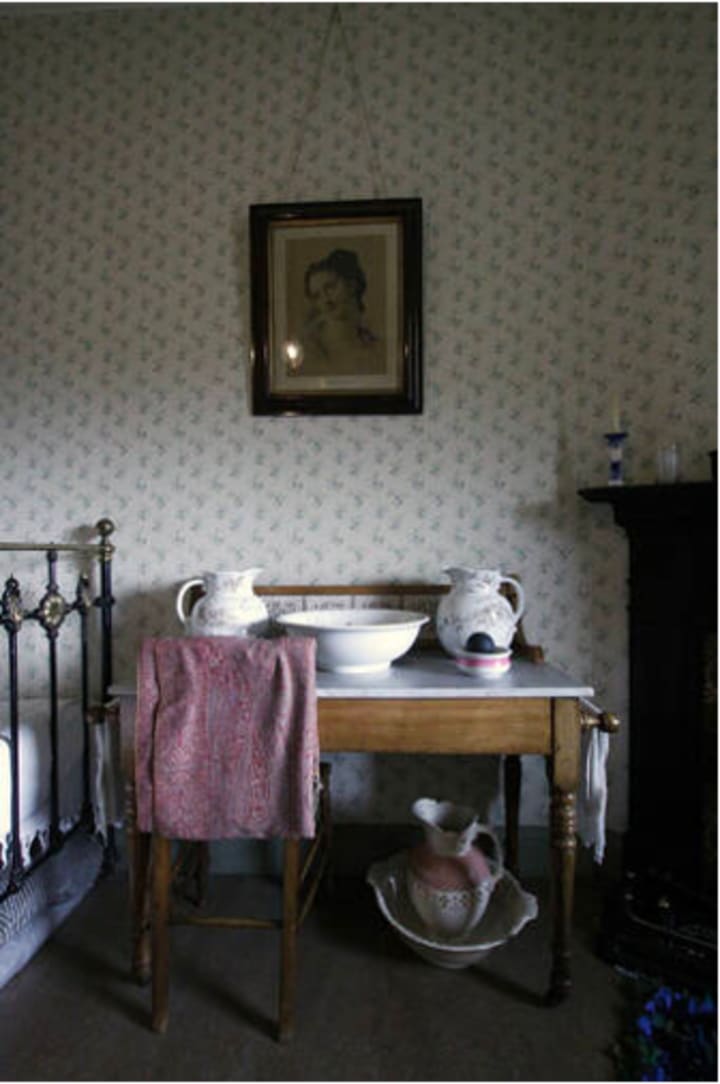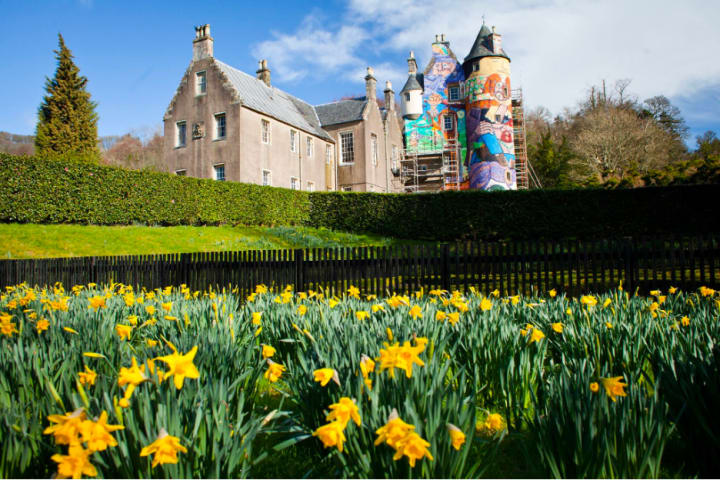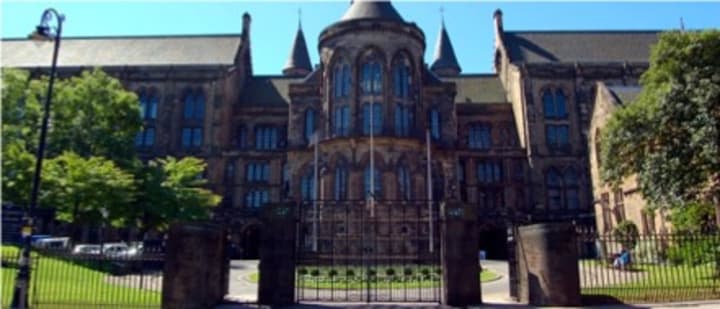Glasgow: A Link to Scotland’s Past
Discovering the history of Scotland in the country's largest city.

While Edinburgh might first come to mind when considering what city to visit for a crash course in Scottish history, Glasgow surpasses it in opportunities to delve into the country’s ancient origins, important historical figures, and everyday life from Roman times through the Victorian era. The largest city in Scotland, Glasgow boasts 1,800 buildings listed by Historic Scotland and is a time portal to the country’s past. Here are the highlights.
History through Houses
Tenement House

A must for history lovers is the Tenement House, a middle-class 20th-century flat that has been excellently preserved. Even simple, everyday utensils become objects of fascination in this wonderful museum and provides insight into the less glamorous, but no less interesting, life of the independent woman Agnes Toward who owned it. Miss Toward was a thrifty housekeeper who gently cared for her possessions, making this flat a historical gem.
Provand’s Lordship

The Tenement House is not the only house that harkens back to a past age. The construction of Provand’s Lordship dates to 1471, making it one of the oldest buildings in Glasgow. This stunning stone house has been home to the master of a hospital, accommodations for the canons of the Catholic Chapter, and a candy store. It was supported by the 5,000-acres it oversees. A grand fireplace dominates the lord’s room, the solid, Spartan furniture reveal a penchant for utility, and glass cases house relics from the former inhabitants. Visitors can peek into the lives of the lord and lady of a respectable estate and imagine living surrounded by the beautiful stonework. With such an intriguing and varied history, Provand’s Lordship holds a special key to the town’s past.
Kelburn Castle

The private home of the Earl of Glasgow, Kelburn Castle features a stone keep, a William-and-Mary style mansion house, a Victorian wing, and a graffiti mural splashing the stone walls with vibrant color. Thought to have originally been built as a wooden tower in 1143 and then replaced by a stone keep in the 1200s, the castle includes add-ons built as late as 1880.
Due to the inevitable deterioration of the stone walls from exposure to the elements, one of the earls decided to hire Brazilian artists to work alongside Scottish artists to paint a giant mural on part of the castle to protect the façade. This unusual decision sparked controversy, and the bright color and bold graffiti design are certainly unusual and perky features for such a grandiose structure. Because the current Earl still inhabits Kelburn Castle with his family, it is only open for tours in the summer, but this site is well worth the prior planning required to visit it.
The Hub of History and Innovation
The scenic campus of the University of Glasgow is unbeatable in capturing the city’s rich history. The majestic gothic style discloses the age of this esteemed university. Established in 1451, the university moved from the east side of the city to its current site in the west side in 1870. The University of Glasgow has produced seven Nobel laureates and continues to be an international leader in research and development.
Fame Past and Future

A testament to the university’s prestige is the Memorial Gates, honoring eminent alumni from the first 500 years of the university’s existence. Built in 1952, these gates remind the university of its renowned status and bright future. Among the names listed are Adam Smith, the Father of Economics from the Scottish Enlightenment, and Lord Kelvin, who gave his name to a unit of temperature in widely used in science. Students at the University of Glasgow can aspire to have their names inscribed on the Memorial Gates if they achieve a particularly noteworthy career.
The Center of the University Experience

The Gilbert Scott Building is the beginning, middle, and end of students’ journey at the University of Glasgow. Host to the annual Fresher’s Fair, lunchtime concerts, classes and exams, and graduations, this building is one that students repeatedly interact with on campus from their first day to their last. The architect, Sir George Gilbert Scott, spearheaded the Gothic Revival Movement and thus was exceptionally suited for constructing this multi-purpose space in 1866.
The Undercroft
A popular photo spot among students is the Undercroft, a prime example of gothic architecture that the university is famous for. The Undercroft is a cloister with a rib vaulted ceiling supported by thick, fluted columns. Its awe-inspiring beauty has earned it a spot in the sets of several movies and TV shows, including Outlaw King, Cloud Atlas, and Outlander.
Roman Remnants
The Antonine Wall

Travelling even farther back in history, remnants of the Antonine Wall serve as a reminder of the Romans’ attempted expansion into Scotland beginning in the 70s A.D. Emperor Agricola first constructed forts in Scotland which Emperor Antoninus would later connect with his namesake wall. Slabs of turf top a stone foundation to reach an impressive size of 4 meters wide and 3 meters high. Only used for a few years, the remains of ramparts, bathhouses, and forts are dotted along the wall. A diverse group of about 7,000 soldiers were stationed here, and small villages sprang up along its length to house families, merchants, and shop keepers.
The Hunterian Museum

Archaeology has unveiled a collection of artifacts from this era, which are now housed in the Hunterian Museum on the campus of the University of Glasgow. Since there is not much written about Antoninus’s expansion into Scotland, these artefacts remain our primary link to this historical era.
Some pieces on display include a lady’s sandal, inscribed tombstones, and a game board. Since the Romans only inhabited Scotland for a short period of time before abandoning the area, little evidence survives of their expansion, so the Hunterian Museum is the best opportunity to learn about this brief yet important era in Scotland’s history.
Scotland’s Past Awaits
From traditional stone castles with a twist to abandoned Roman infrastructure, this bustling city contains a treasure of knowledge. No shortage of fascinating sites to visit exists, and the preservation of its past from its ancient origins to its famous figures makes this city the top destination in Scotland. Understanding a country’s past is the first step in appreciating its present, and there is no better way to discover Scotland’s history than to visit than Glasgow.
Check out my profile to browse my stories in other genres and follow me on Facebook and Instagram to get updates on new stories. Please like and subscribe if you enjoyed. Thanks for reading!
To learn more about this incredible Scottish city, the following resources hold a lot of interesting information which was the basis of this article.
Clough, Juliet, et al. “Scotland.” DK Eyewitness Travel Guide. London: DK Publishing, 2014.
https://www.gla.ac.uk/explore/visit/campustours/prospectivestudents/studentsselfguided/
https://www.nts.org.uk/visit/places/the-tenement-house
https://peoplemakeglasgow.com/inspire-me/historic-glasgow
https://www.undiscoveredscotland.co.uk/glasgow/provandslordship/index.html
https://www.antoninewall.org/
https://www.theglasgowstory.com/image/?inum=TGSD00258
https://www.gla.ac.uk/explore/meetglasgow/






Comments
There are no comments for this story
Be the first to respond and start the conversation.